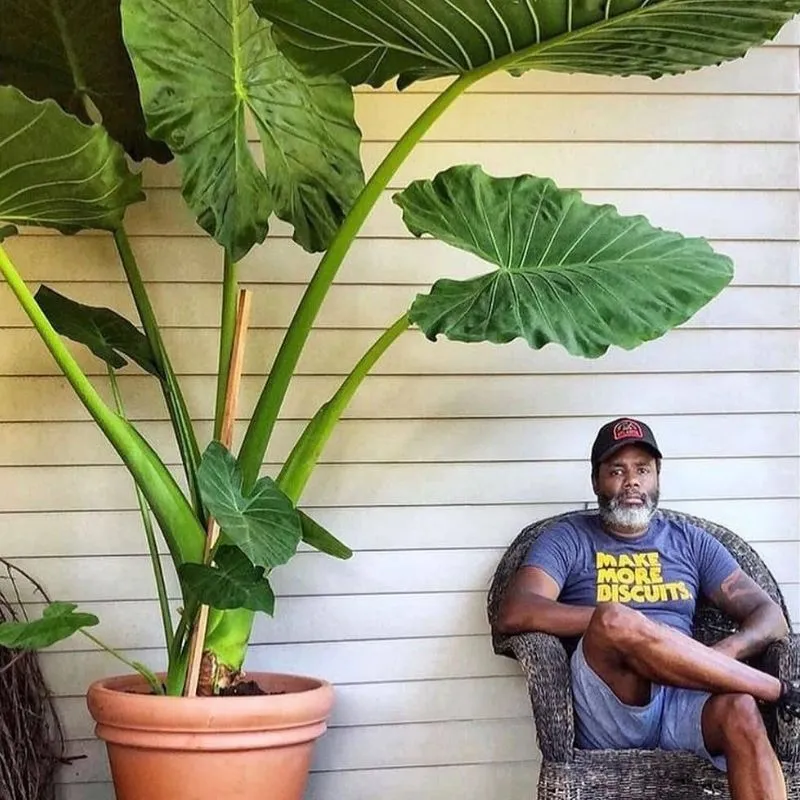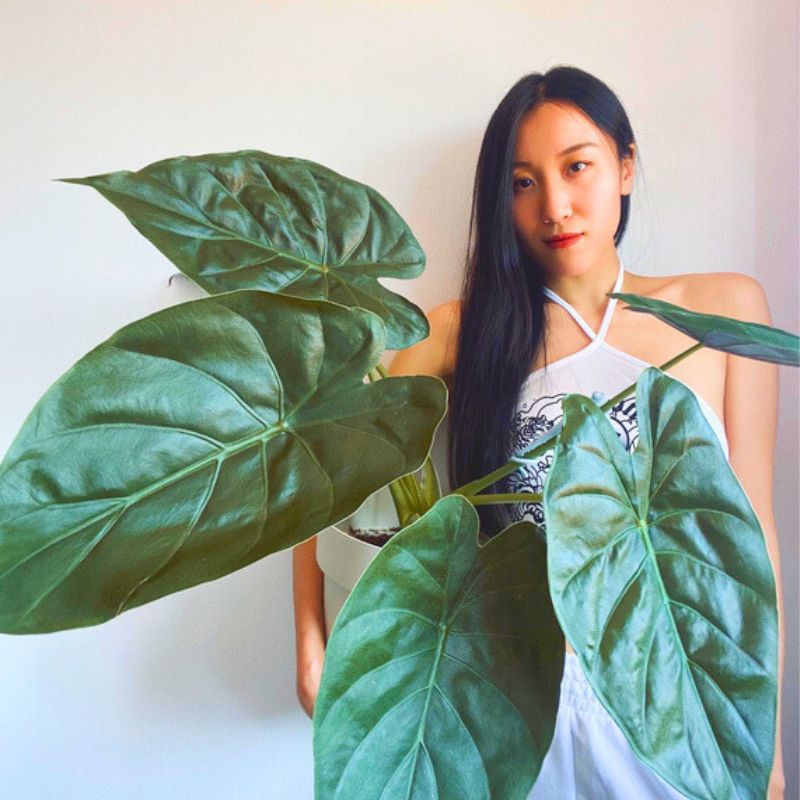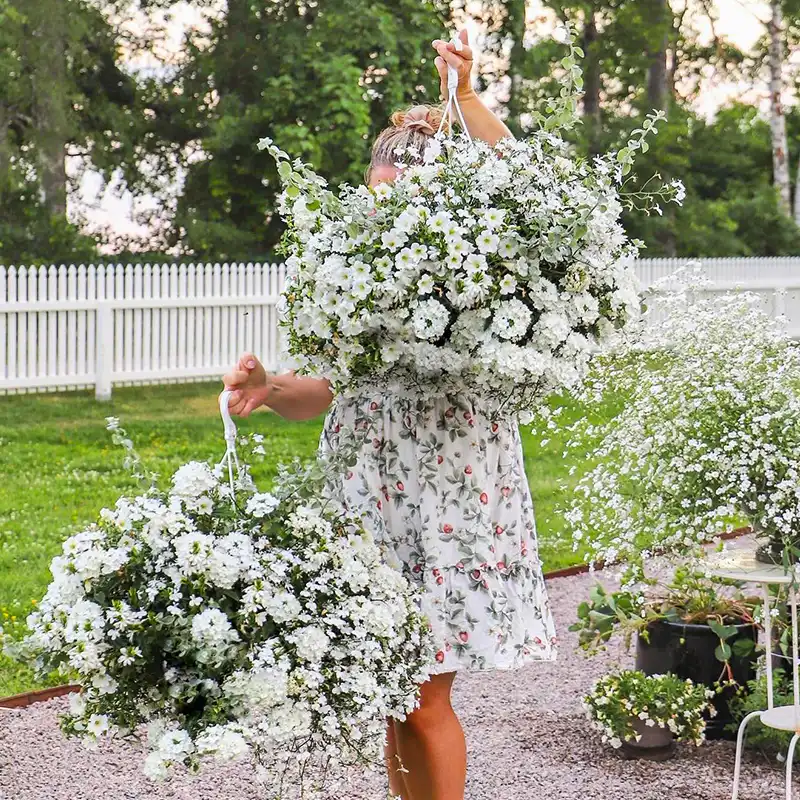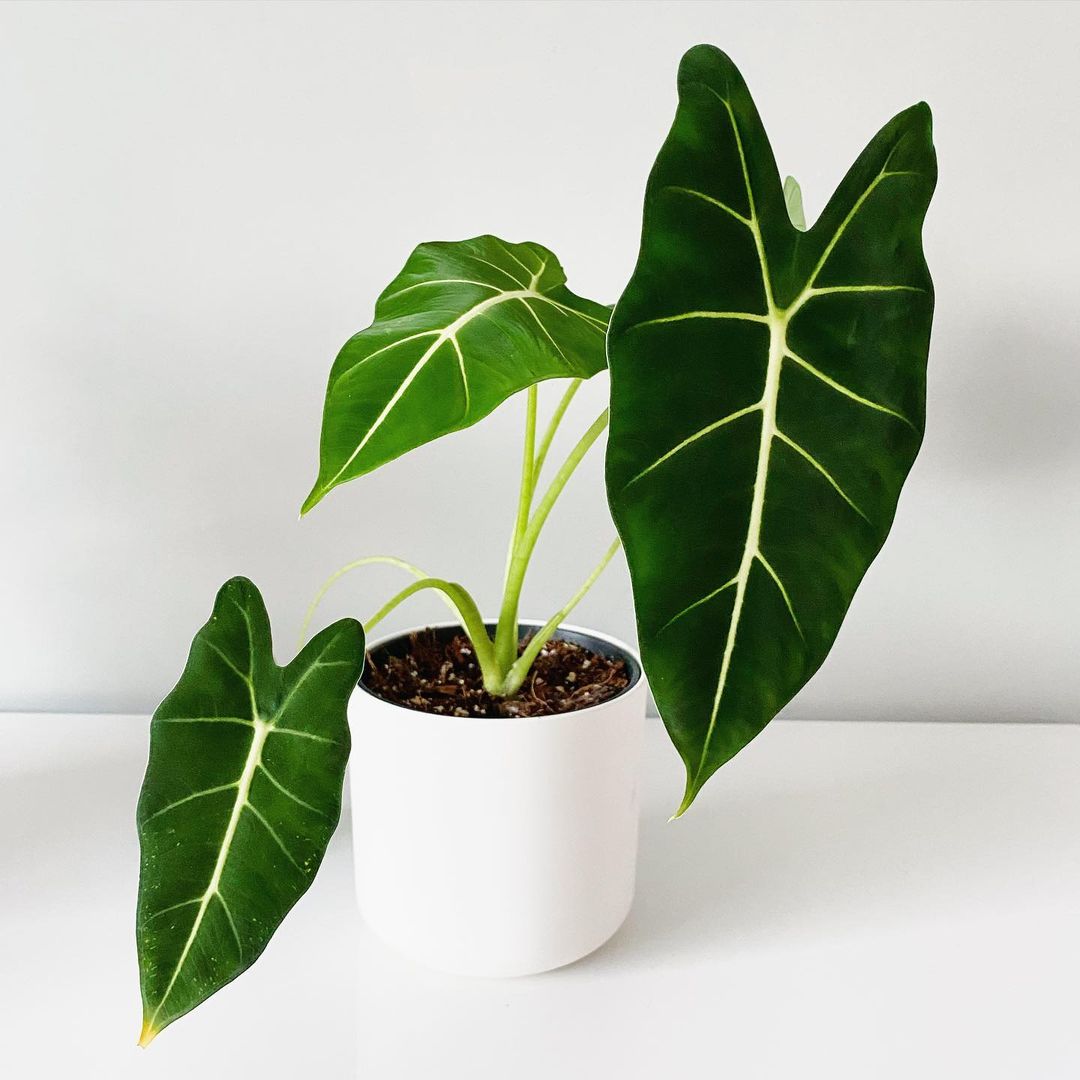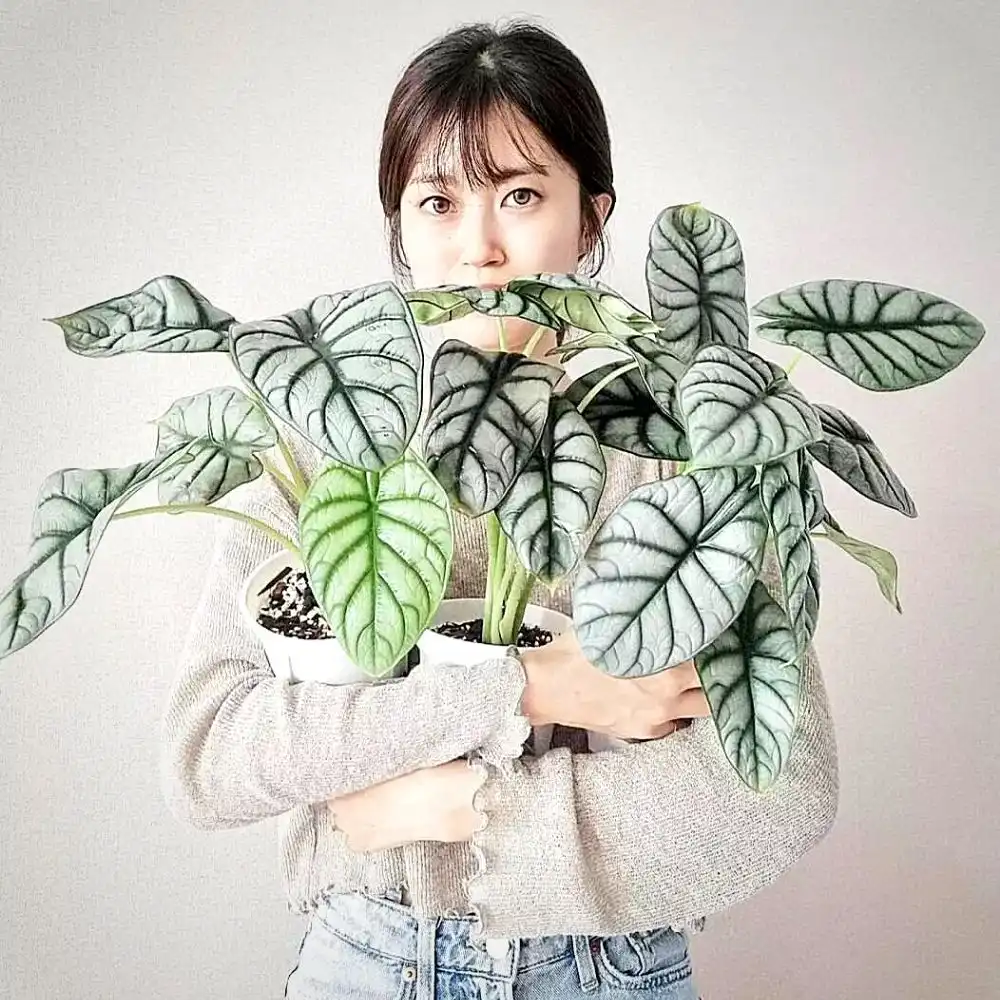Many Alocasia plants have striking leaves, but none is as popular as the Alocasia Macrorrhiza variegata. Also known as the variegated Elephant Ears plant, this plant, which is originally native to Southeast Asia, is an exciting indoor plant that is in high demand nowadays.
Alocasia Macrorrhiza belongs to the arum family, specifically to Alocasia genus. When this plant reaches its mature plant height, its leaves can reach 3-4 feet in length!
The regular price ranges between $25 for a small single plant to a whopping $500-$600 for a large mature piece as shown below.
Variegated Alocasia (Macrorrhiza Variegata)
The variegated alocasia (Alocasia Macrorrhiza Variegata) for sure is one of the most spectacular houseplants you can grow within your living landscape.
The glossy leaves of this plant are marbled with tones of light green and white blotches, creating a striking environment. It is a plant everybody wants nowadays. Read the article 'The Best 6 Big Leaf Houseplants for 2023' to find out what other plant gems can transform your indoor spaces.
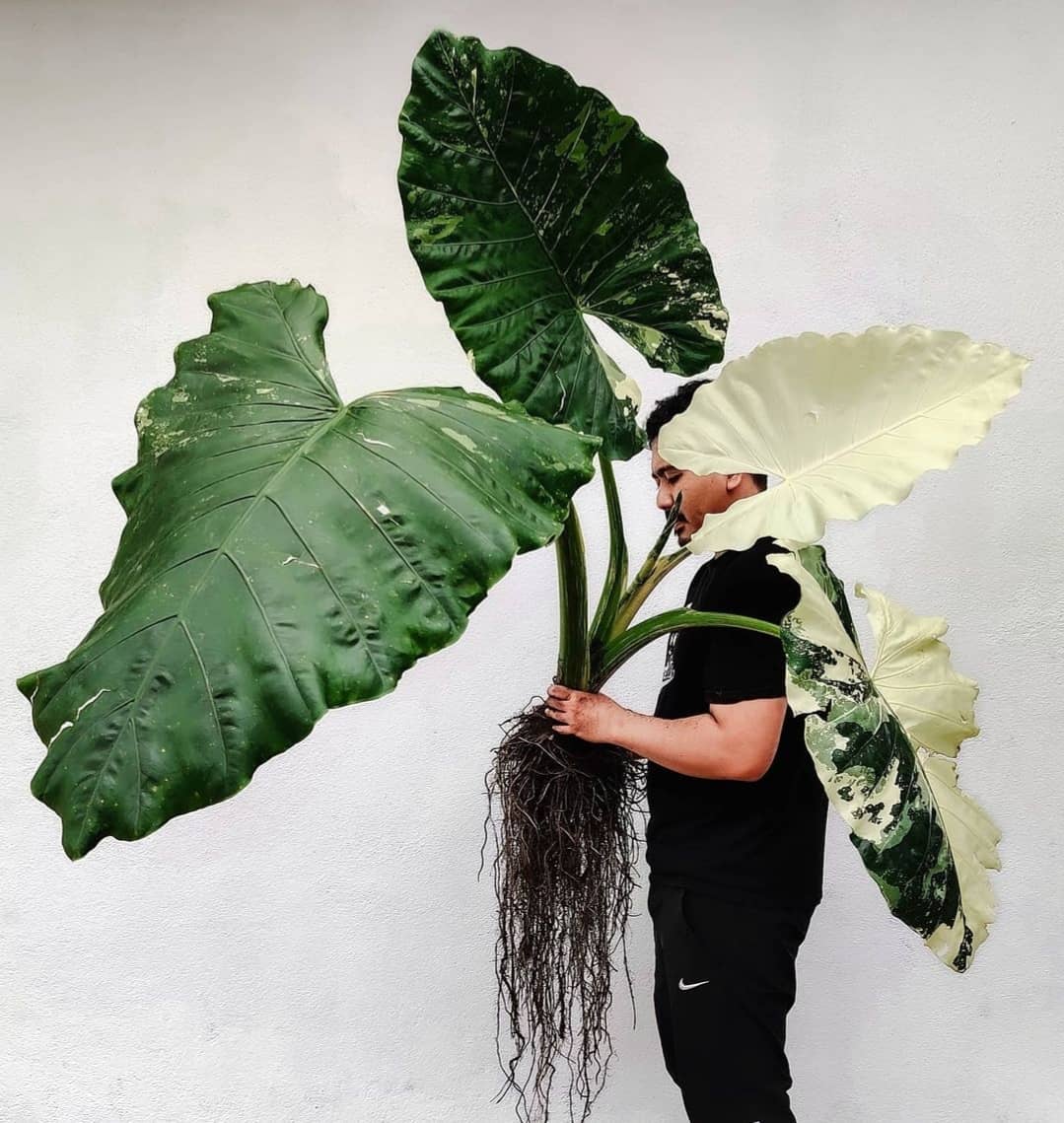
Alocasia Macrorrhizos Is a Statement Plant
This statement plant with its significantly tall and large, white and green leaves, also known as Alocasia Macrorrhizos, or variegated Alocasia Calidora, can easily become the centerpiece of your living decor.
Originating in subtropical Asia and eastern Australia, there are many species of Alocasia, from exotic types with striking color patterns and variations to classically refined anad elegant ones.
Alocasia comes in a wide variety of colors from almost black to chartreuse to pale green. Among the various species, most of which happen to be native to the tropics, none is as in high demand as the variegated Alocasia, the Alocasia Macrorrhiza Variegata.
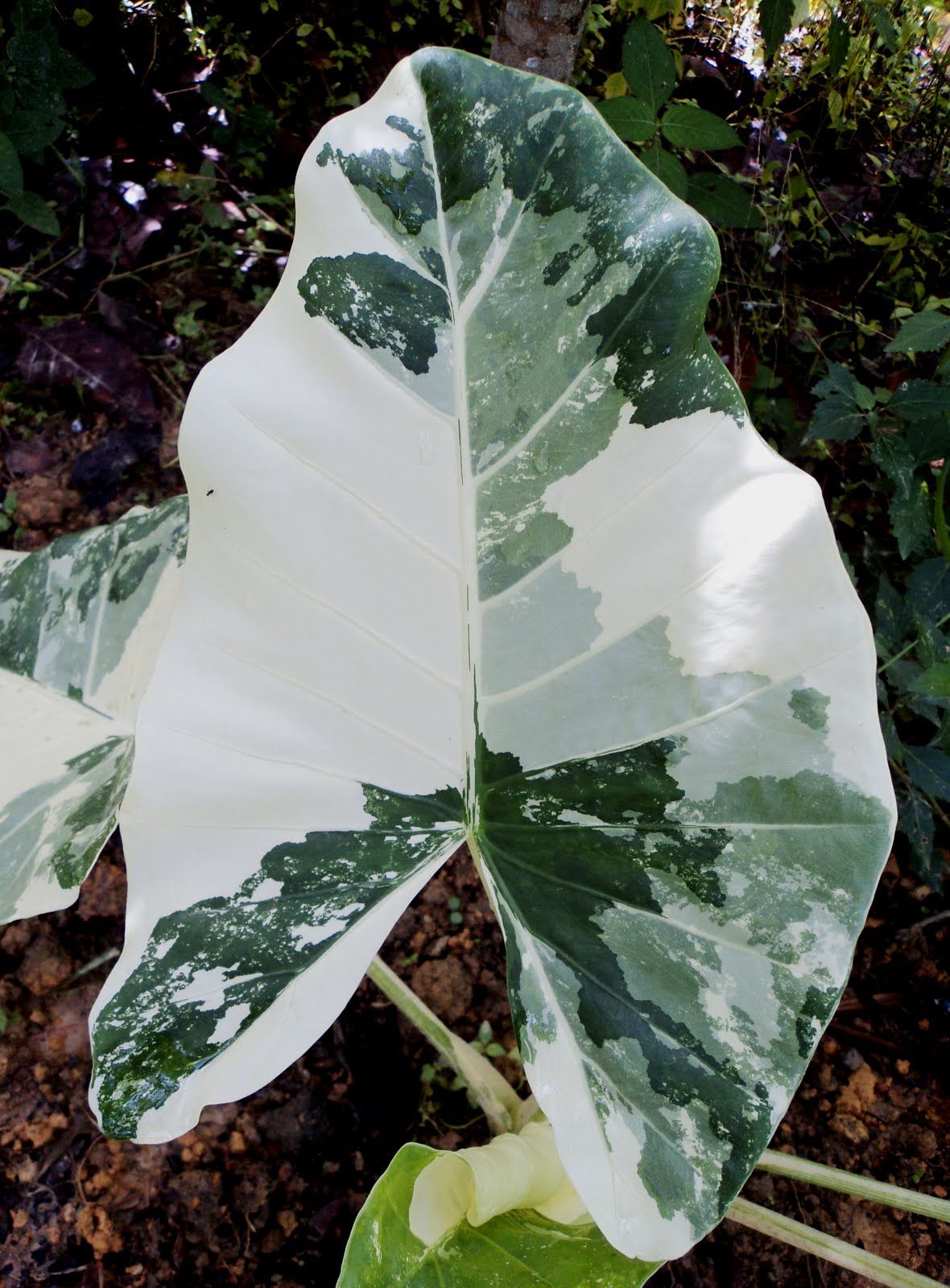
The Ideal Conditions for the Alocasia Macrorrhiza Variegata
Each plant is unique and needs particular conditions to thrive in an indoor setting. Alocasia Macrorrhiza Variegata is no different, and putting some thought into your initial setup before you begin growing it will save you endless trouble in the long run.
Alocasia Macrorrhiza Variegata is a standing plant, with huge leaves on widely spreading rigid stalks. As such, they need room to grow both vertically and horizontally. While they need bright, indirect light, they can also tolerate part shade but should be kept out of full sun to prevent leaf scorching. They prefer warm, and humid conditions.
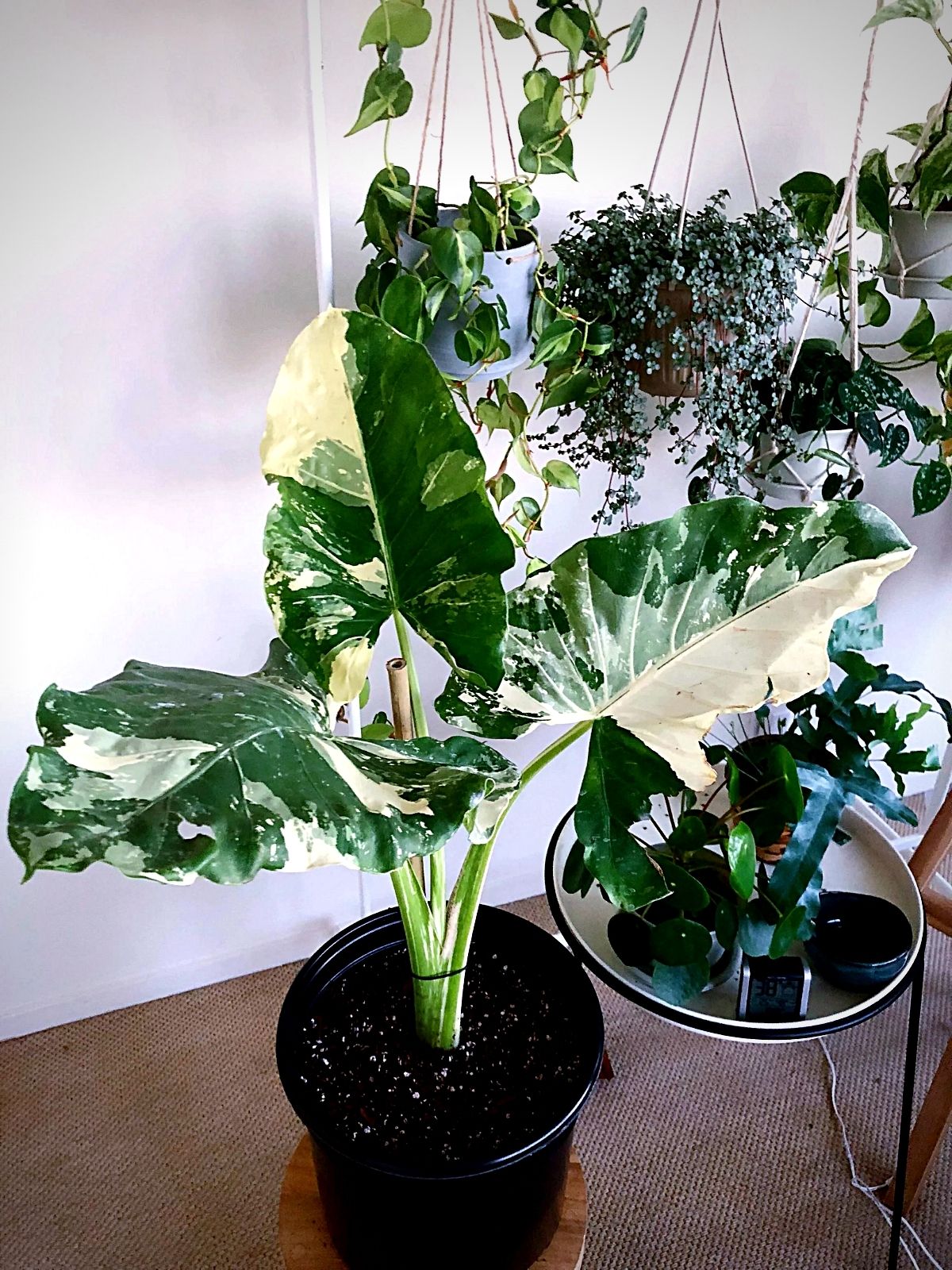
Find the Perfect Spot for Your Variegated Alocasia
It's also important to know if you starat with a small young plant, or with a more mature older plant. Younger plants adapt more easily to an environment that is less suited for Alocasias in general, whereas older mature plants need the perfect spot from the time you give it the place in your home.
Alocasias do best in bright, indirect light. The Alocasia Macrorrhiza Variegata, with its variegated leaves, will need brighter light for longer periods each day than other Alocasias. Medium light may not be sufficient for this plant as the white portions of the leaves do not contain chlorophyll and will not photosynthesize to produce energy.
This means that the green parts of the leaf need to work a little harder and a little longer to meet the plant's energy requirements.
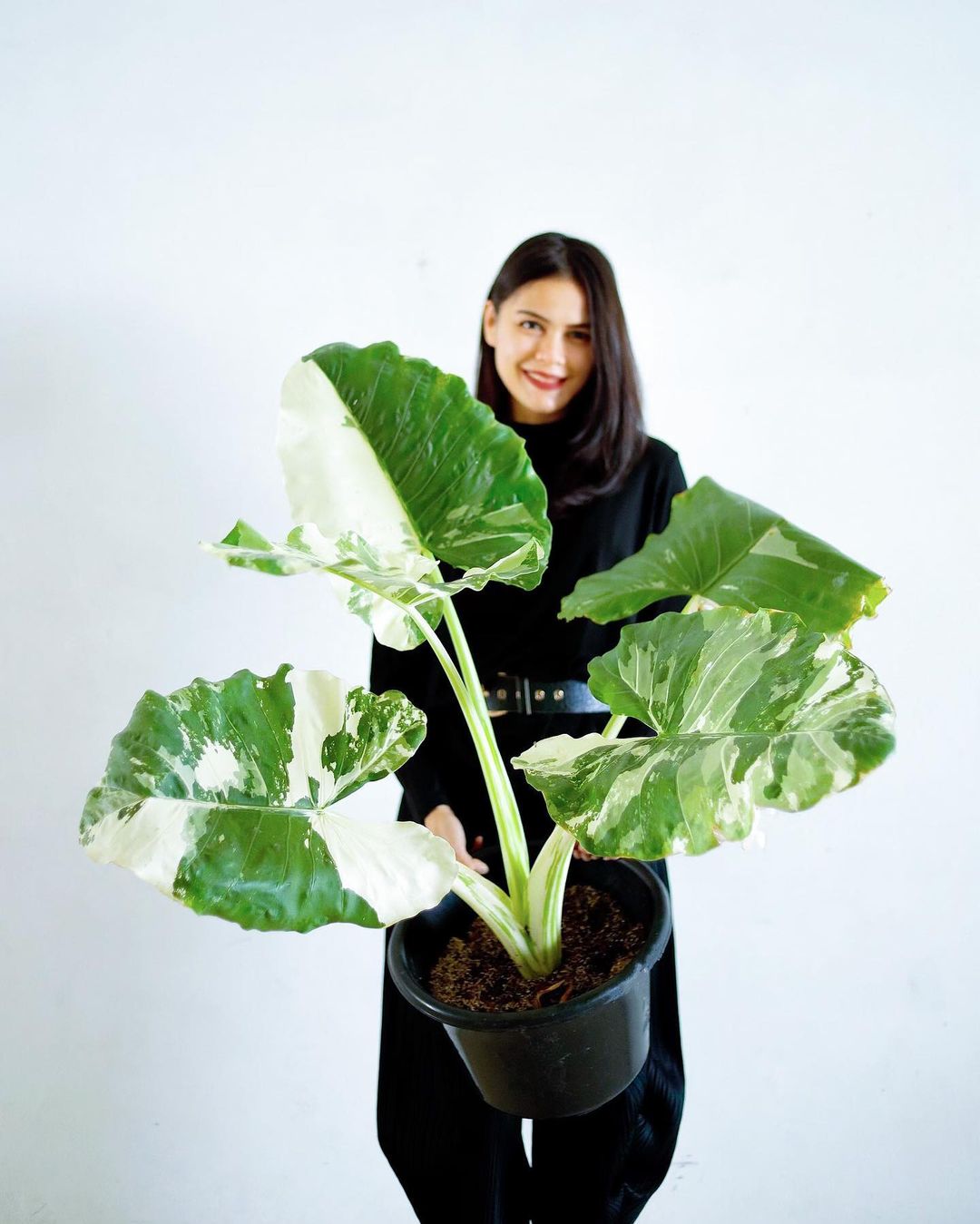
No Direct Sunlight for Your Elephant Ear Plants Please!
Make sure to not place the plant in direct sunlight. The light needs to be bright but indirect or filtered through a curtain or shade cloth to prevent leaves from scorching and burning.
The light requirement ranges from 15,000 to 25,000 lux. You can achieve the light range by placing the pot near a north or east-facing window so that the plant gets just a little sun exposure.
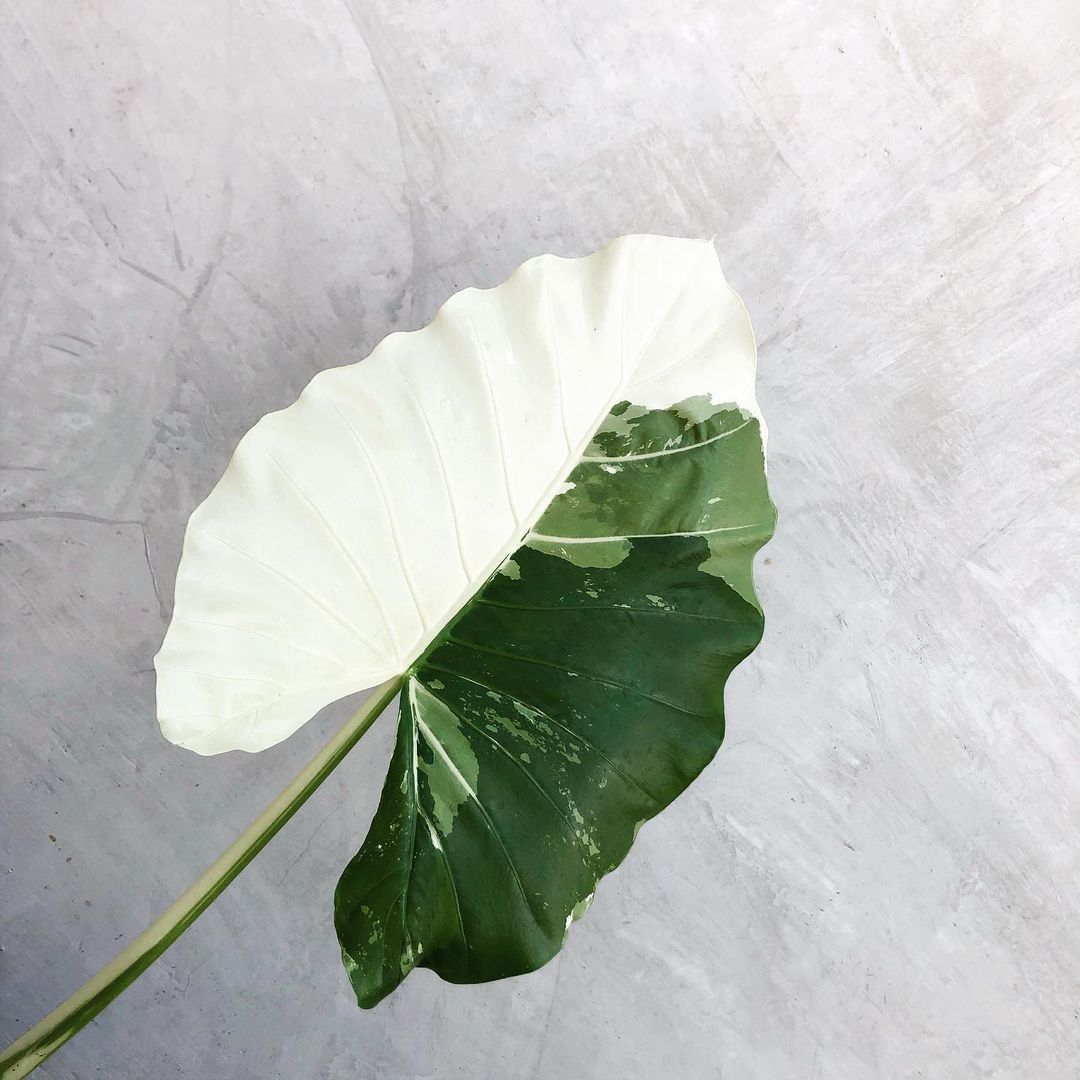
The Watering of the Variegated Alocasia Macrorrhiza
Generally speaking, the Variegated Elephant Ears need a bit less than the non-variegated types, as their growth goes a bit slower. They thrive on soil that drains well and is regularly moist. When you feel that the top few inches of soil are dry, it's time to water the Alocasia Macrorrhiza.
Make sure to let it dry out once in a while because consistent moist in the soil increases the likelihood of pests and illnesses developing. Watering Alocasia Macrorrhiza variegata is best done slowly, stopping when you notice that the water is beginning to drain out of the pot. Remember not to leave the pot submerged in water, and if you use containers, ensure they have proper drainage.

Alocasia Leaves All Have Dripping Water from their Leaves
When your Alocasia Macrorrhiza Variegata is dripping water from its leaves, it means it's slightly overwatered and it's trying to get rid of the excess water by sweating it off. The excess water escapes from tiny pores in the leaf. This is normal and no reason for concern, your plant is fine.
Be careful of your wooden antiques underneath your plant though, as the water is slightly acidic and will make circles in the wood that don't go away.
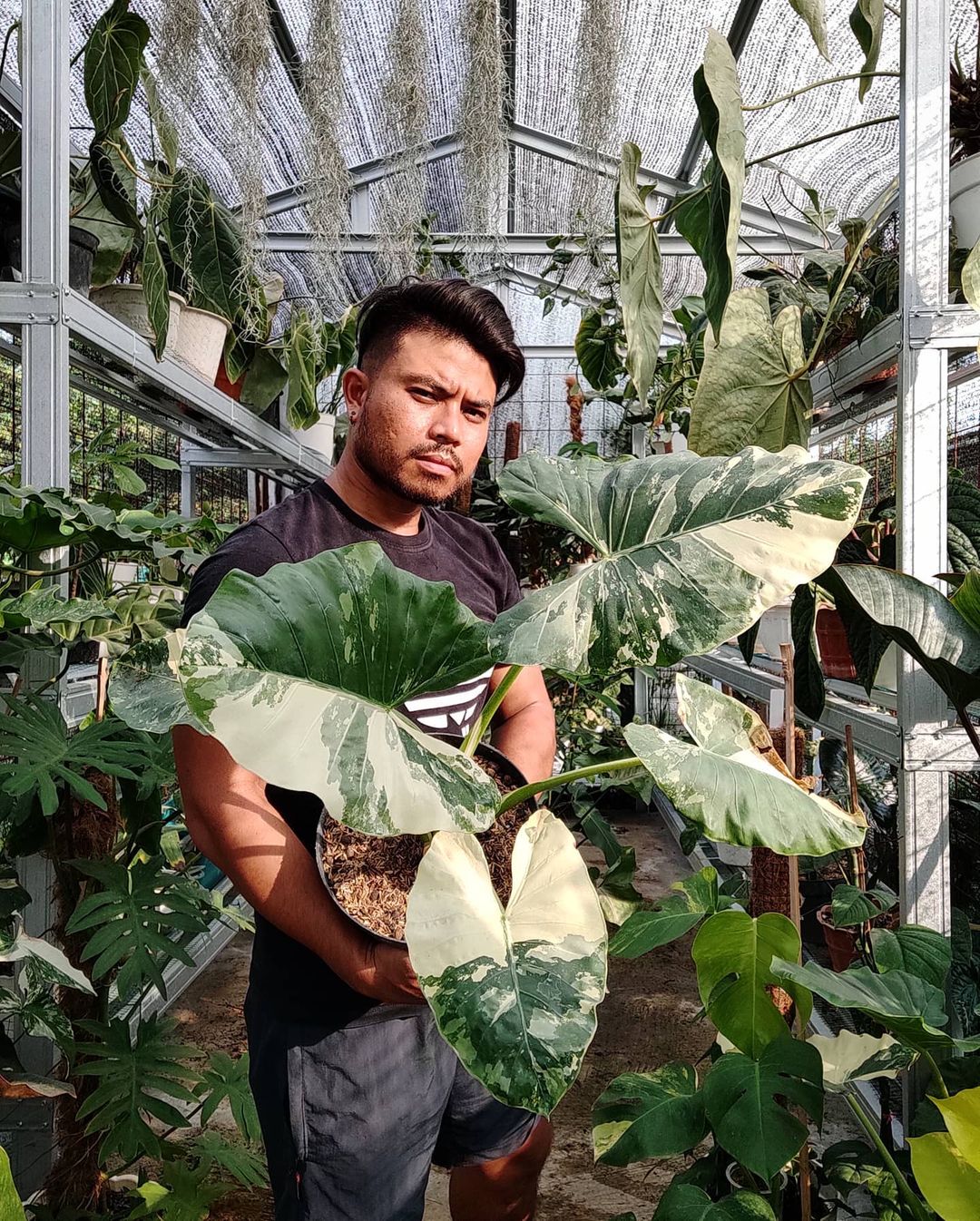
Other Care Tips for the Alocasia Macrorrhiza
- Warmth
Since the plant is tropical, warm temperatures between 65 and 80 degrees are ideal for growing it. The plant cannot withstand temperatures below fifty degrees Fahrenheit, so you must keep it away from chilly air coming from fans or air conditioners. You can leave the plant outside during the summer but don't forget to bring it inside before the nights become too cold, especially during the winter season.
- Humidity
The ideal humidity range for the plant is between 60 and 80%. It is not feasible to plant in an area with high humidity at home, so you must create a more humid area for Alocasia macrorrhiza variegated. The ideal method is to gather all the plants that require high humidity and bring a tiny humidifier for each plant. This will assist in adding moisture throughout the year and will accelerate the plant's growth. Alternatively, you can lay a pebbled tree beneath the plant and water it.
- Soil
Although the plant requires well-draining soil, it's crucial to avoid excessively damp soil since this can lead to fungal illnesses like root rot. To plant Alocasiaa macrorrhiza variegata, you can also measure the pH, which should be between 5.6 and 5. To make the perfect planting soil, mix equal amounts of compost, peat moss, perlite, and orchard bark.

Common Issues and Solutions Related to Alocasia Macrorrhiza
Growing Alocasia Macrorrhiza Variegata can come with its share of challenges. Considering the regular price of these plants, keeping them pest-free is essential for preserving their value.
Pest Control and Disease Prevention
Pest control for Alocasia macrorrhiza is essential to maintain striking appearance. Regularly check for pests like spider mites, aphids, and mealybugs, which can damage the arrow-shaped leaves.
Use insecticidal soap or neem oil to treat infestations in and around your giant taro plant.
Disease prevention should include avoid overwatering, which can damage the roots. Ensuring good air circulation and not letting the plant sit in water can prevent fungal infections.
A healthy alocasia is a stunning addition to any garden or indoor space, showcasing its prominently veined large leaves.
Advanced Tips to Care for Your Mature Plant
Caring for a mature Alocasia Macrorrhiza Variegata involves a few advanced tips. Repotting the plant every couple of years in spring ensures it has enough space to grow.
When repotting, choose a pot that is one size larger to accommodate the growing rhizomes. Regular misting and maintaining high humidity levels are crucial, especially if the plant is overwintered indoors. Fertilize monthly during the growing season with a balanced, water-soluble fertilizer to promote robust new growth. Avoid direct sunlight, provide bright, indirect light to keep the foliage vibrant and healthy.
Try Not to Become Attached to a Particular Leaf
Try not to become attached to a particular leaf as they don't tend to last as long as leaaves on other tropical plants. Depending on the specific species, you'll get may be a few months out of your Alocasia leaves. But! They're faster growers, so as quickly as they are to drop a leaf, they're as fast to grow new ones and will reward you with many beautiful leaves during your life.
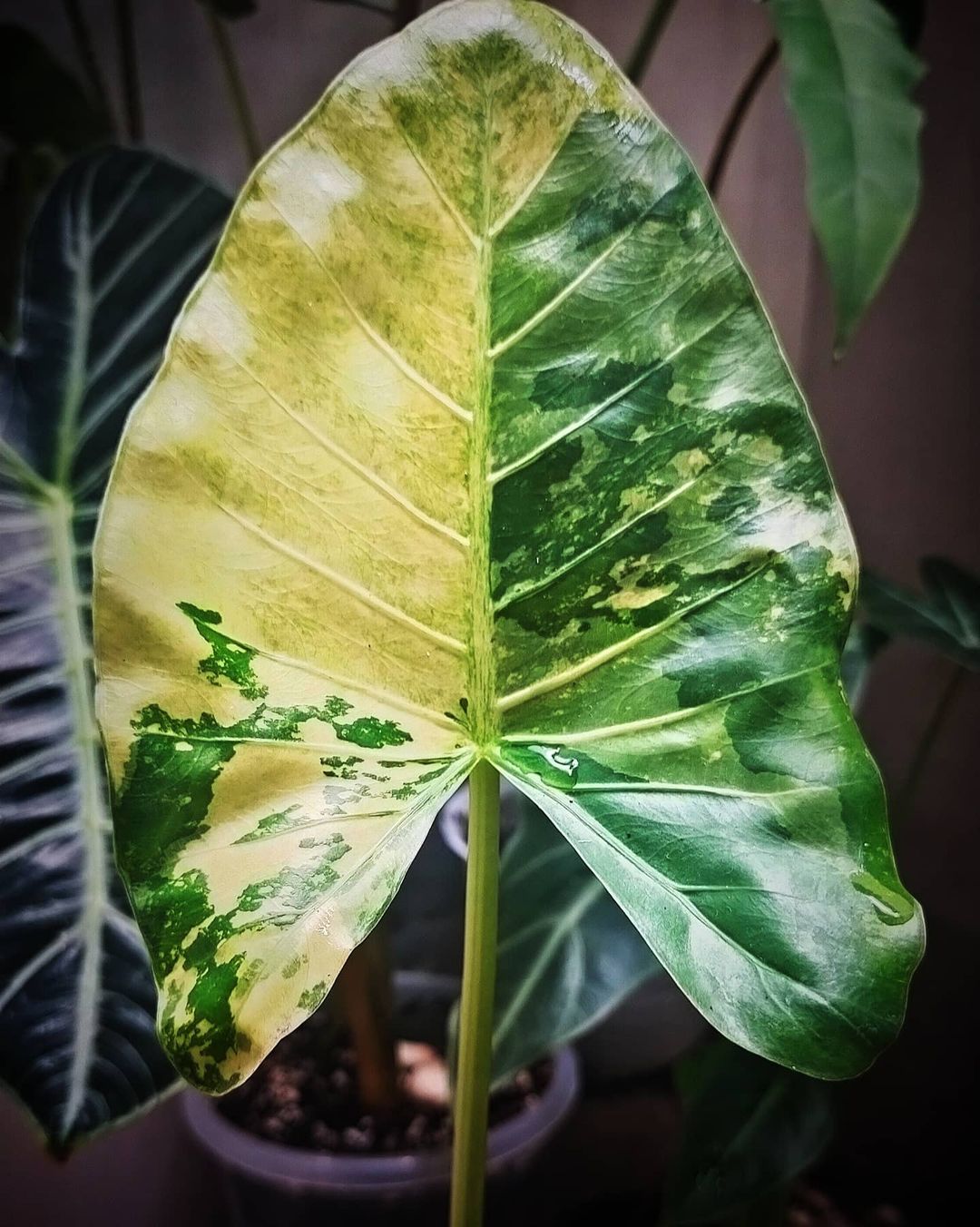
Macrorrhiza Variegata is a Very Rare Elephant Ear Plant
So, the Variegated Alocasia (Macrorrhiza Variegata) is a very rare elephant ear plant and is quite different from the typical. The incredibly large thickly sculpted glossy green leaves are held upright on dramatically thick, rigid stems. This Alocasia will be an interior design object within itself.
With foliage that is covered with white blotches, it is a piece of art in itself. Make sure to take care of your statement Alocasia, and you, and the people visiting your home, will be in awe of such a wonder of nature.

Header picture: @sighthounds.love.plants.



